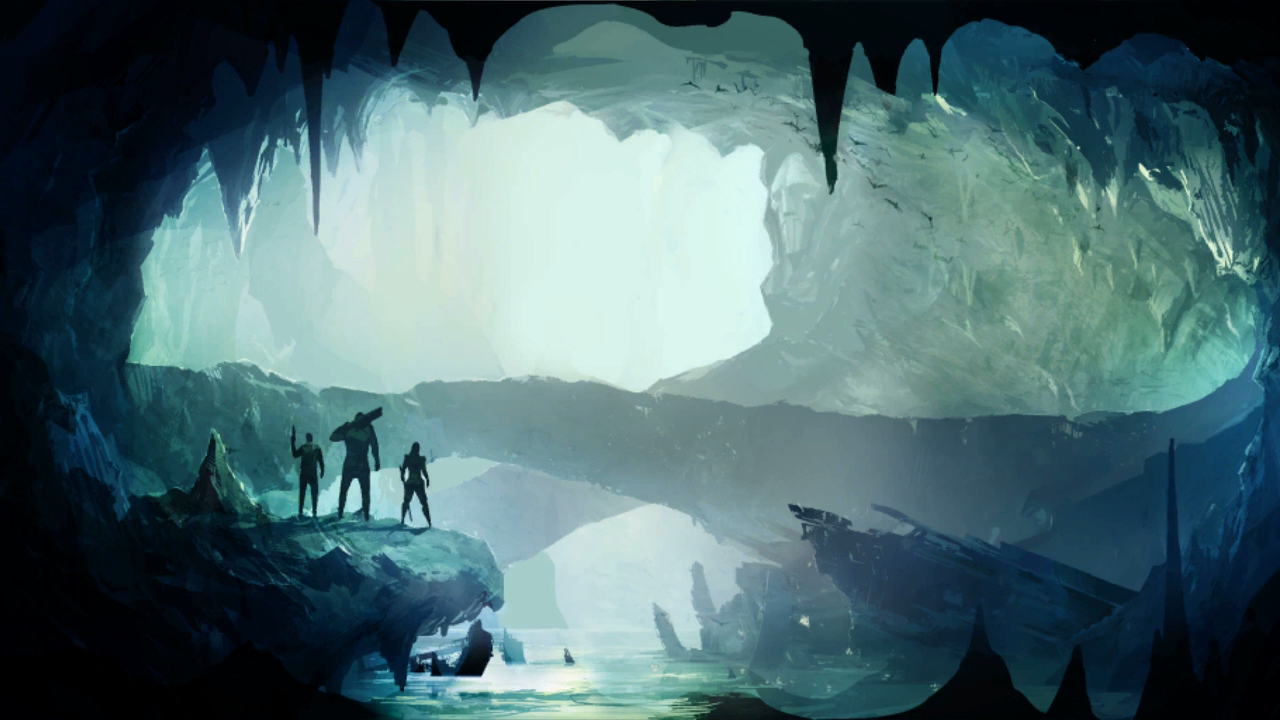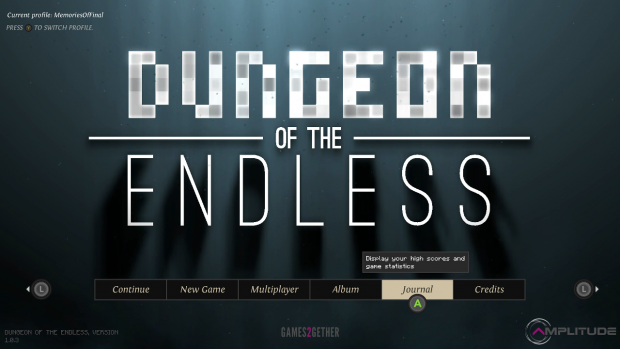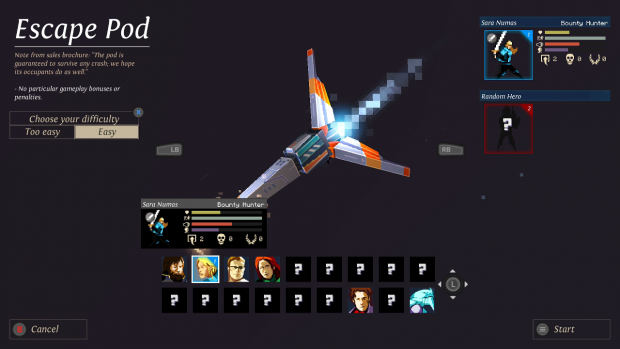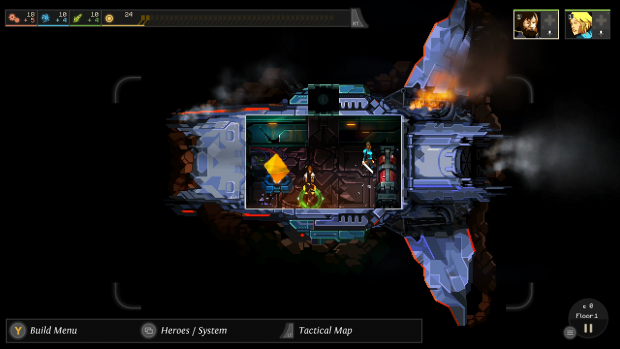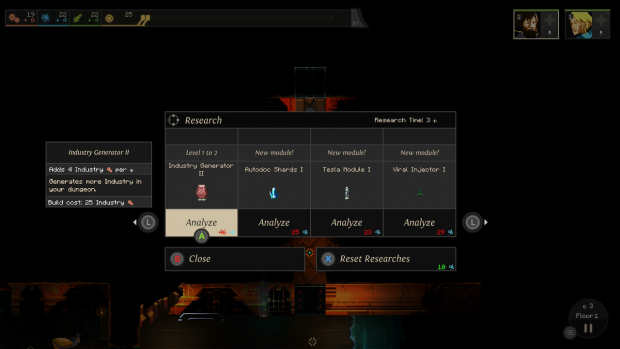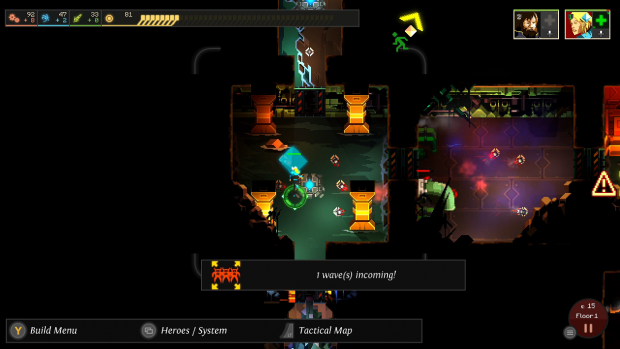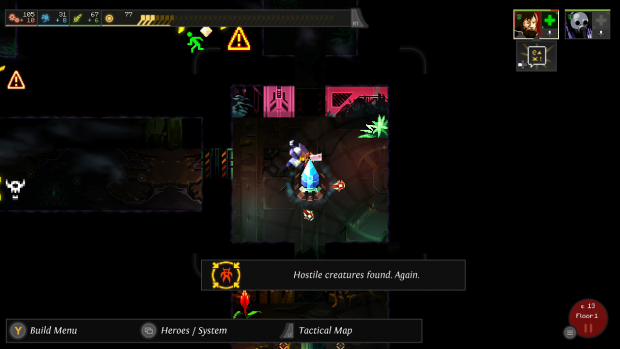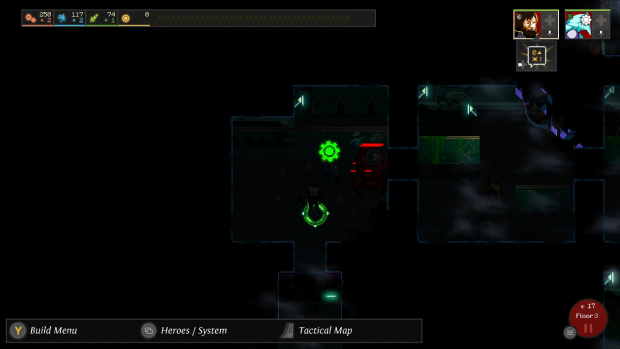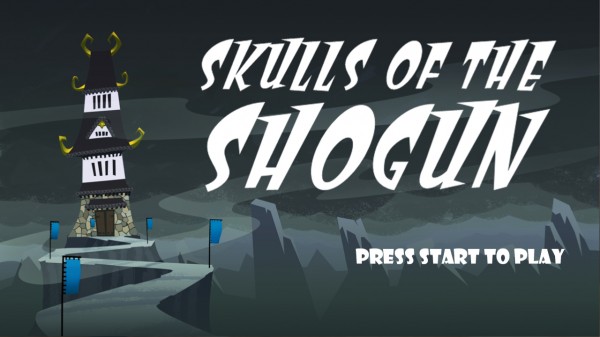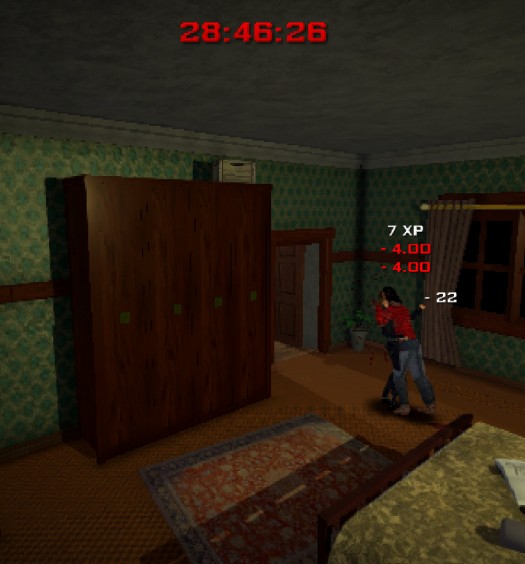Having never heard of Dungeon of the Endless before, I assumed it was a dungeon crawler RPG. Haha — not even close. Dungeon of the Endless is a clever roguelike-like tower defense game mixed with a bit of strategy that frustrates me in ways that it should not. It’s close to being considered a fantastic experience, yet, I find myself constantly one step away from throwing in the towel and saying forget it. Its design choices often boggle my mind. Not all is doom and gloom, though. Let’s rewind things back to the beginning.
Amplitude Studios has released a few games (Endless Legend, Endless Space, Dungeon of the Endless) with “Endless” somewhere in the title. The studio even has a special occasion each year called Endless Day, which starts on January 21 and lasts for a few days full of special limited time events in each of their games. Yet, none of this lore is actually available while playing Dungeon of the Endless. Instead, the player is introduced to a fairly lifeless menu screen with very limited options.
What’s going on here?
Missing from the typical options menu are things as basic as screen brightness, sound effects, how to play and even control scheme. You’re basically funneled into playing blindly, not knowing what the game is even about. After choosing new game, you’re is given the option to play on the Escape Pod with the difficulty choice of Too Easy or Easy and six starting characters. At that point, there is still no hint about what kind of game this is. Too Easy and Easy is a bit far-fetched, as not only have I not unlocked and probably will not see any new difficulty levels like Normal, Too Easy is still tough for a first timer and Easy is hard. Full stop.
To the game’s credit, there are seven pods that act like world modifiers and change the way the game is played. It’s not that easy, though, as six of them have to be unlocked, which is both good and bad. I prefer it this way as it gives me something to work towards, but others may not have the patience to unlock them, which will vastly hinder the amount of available options. Many of the pods have alternate unlock conditions, which is fantastic. After having played on six of the seven pods, I appreciate how they change the gameplay just enough that it’s still the same game, but the focus on what is needed to survive changes.
The game has at least 18 characters but only six are available from the get-go. Each of the six characters have a bunch of symbols on them with different-sized bars that show their efficiency in something. Now that I have ample experience, I know exactly what each of those symbols mean, but anyone playing for the first time may infer them as nothing more than chicken scratch. Even more boggling, some of these six characters are the least beginner-friendly of the cast. How do you explain using the slowest character, the fastest yet most fragile character and the smartest character that’s fairly fragile as beginner choices? My disdain for speed queen Sara Numas is very high, so much so that if it were up to me, I wished Dungeon of the Endless had only 17 characters.
First time players will have no idea what’s what, so lets say they choose Max Kane and Sara Numas, the first two characters on the selection screen.
The first thing seen upon starting the game is a lot of toolbars with no descriptions. If the player goes to the heroes/system screen, they are assaulted with more boxes and numbers with absolutely no context, just symbols. Amazingly enough, until yesterday, I neglected to notice that the player could press A on the hero to view a biography, which also describes the meaning of those boxes. At the beginning of the game, I had no attachment to any of the characters, so why would I look at their biography? Most of the boxes represent common terms found in RPGs, but the terms don’t explain how they affect the game.
The equipment screen is fairly simple, thankfully, but the items themselves are filled with clever item lore and some include skills without any description of what they do. Does skulker or master hacker sound like something you would know off the cuff from the first time playing? The character skill screen is filled with pictures that are mostly indistinguishable to what the skills actually do. At least the descriptions are fairly straightforward.
The controls overview finally makes an appearance here in the systems menu and yet is still largely unhelpful until the player has experience in the game. A tutorial is available in the systems menu, but it is almost worthless. Yes, it does mention the bare minimum on how to play the game, but it does this so non-chalantly that it’s hard to remember the meaning of any of what it tells you. Dungeon of the Endless leaves new players clueless when it comes to understanding the goal of the game.
You almost have to keep an internet knowledge base handy for the sheer volume of information given out free of context.
It’s not all bad, though
After the initial major hurdles that will turn many players off, you start to learn things through interpretations and assumptions. Powering the room costs dust, a limited resource that is obtained from occasionally opening doors and killing enemies. Modules don’t work unless there is power in a room, and enemies may spawn in rooms without power. Players with tower defense experience will realize this is where laning comes into play. There is usually not enough dust, so the player has to choose which rooms stay on and act as chokepoints and which rooms will inconvenience the monsters as much as possible. One of the more advance tactics is to leave as many rooms unpowered as possible early on to increase monster spawns for more chances at dust to light up more rooms toward the end of the floor.
Modules are your lifeline in Dungeon of the Endless. You won’t get very far without upgrading some of the more useful modules with a randomly found artifact and the science and industry resources. The heroes level up and get stronger from the use of the food resource, but also rely on food to heal in a pinch. In this regard, the resources are intertwined and each have a fairly important role.
All of this could be considered the preparation phase. Upon reaching a level’s exit, the player can either continue exploring doors for items, resources and other things or make an attempt at the exit. To escape, the player needs to take the crystal from the start to the exit. Once the player picks up the crystal, enemies will forever spawn in unlit rooms to attack until the player leaves the level or dies trying. Depending on the level layout and rooms lit, it can either be a casual stroll or utter pandemonium for survival.
While progressing toward the final exit of the game, players will find more heroes to recruit to the team and potentially unlock. Leveling heroes and finding equipment will be a necessity while the monsters get more menacing and supplies start to become more scarce. Strategy is needed for the last few floors as supplies are scarce, and more negative events may occur.
It’s this euphoria of creating a good plan and watching it play out successfully that will entice you to keep playing more and more. Watching turrets destroy enemies under any scenario is nice, but grimacing at the thought that your turrets may not pull through without you getting destroyed and killing an enemy before it gets out of reach are even better feelings. Thanks to procedural generation, no two playthroughs are the same, and even the different heroes that are recruited will change the strategies for success. Each of the characters have stories to them and many of them are interconnected in a way that makes them intriguing. I refer back to the previous mention of needing an internet knowledge base as you’re not going to care about the backstories in-game. Add in the fact that there are seven different pods with different game modifiers and suddenly, there’s a lot that can be done in Dungeon of the Endless.
The big picture
The entry barrier is very steep. While many contemporaries like Rogue Legacy feature simplified gameplay to lure players into their complex potential, Dungeon of the Endless has complex gameplay that aims to hook players into staying for its endless potential. Letting players figure things out on their own can be a great thing in games, but at some point, some bones have to be tossed over to help get the player started. Amplitude needs to give a much better tutorial or explanation about what’s going on before letting the players be on their merry ways. The structure and gameplay in Dungeon of the Endless is very special, but what good is it if players are turned off before giving it a proper chance? Those who did stick it out will find a fun tower defense experience full of strategy elements.
Big bugs
There’s one more thing that needs to be said: do not buy this game until it’s patched. Some games can be played through even when in a semi-broken state; this is not one of them.
Dungeon of the Endless is a roguelike-like with no real save system. It also happens to be a fairly long game, so Amplitude Studios has added a save-and-quit feature that is a temporary save. A common and major game-breaking bug is that after an unknown amount of monster spawns, one of them will lock up and stop moving. Players can’t interact with them, but the bugged enemy just stays there. One of the other things that happens is that the save-and-quit feature gets greyed out, making it impossible to save. Once the player beats the level, if they aren’t glitched out entirely, the game will more than likely lock up in one of a few different ways, all of which leads to nothing happening. Guess what? If you reload the game, since you didn’t save before quitting, that game save is gone. Woohoo.
I found a workaround for the time being, but the Drill Pod (the endless mode version) is unplayable thanks to the incredible likelihood of later levels locking up. This is unbelievably frustrating, and I don’t want to see anyone else experience these unpleasant happenings that I have had to deal with.
XBLA Fans has made Amplitude Studios aware of these technical issues, and the team is working on fixing them. In fact, a studio representative claims that some fixes have already been implemented in the time since we received our preview build in December, though I still encountered problems after the first of these fixes were supposedly rolled out. My hope is that Amplitude is able to fix all of these bugs, because they’re hindering what is otherwise a very promising game.
A Dungeon of the Endless preview copy was provided by Amplitude Studios.

